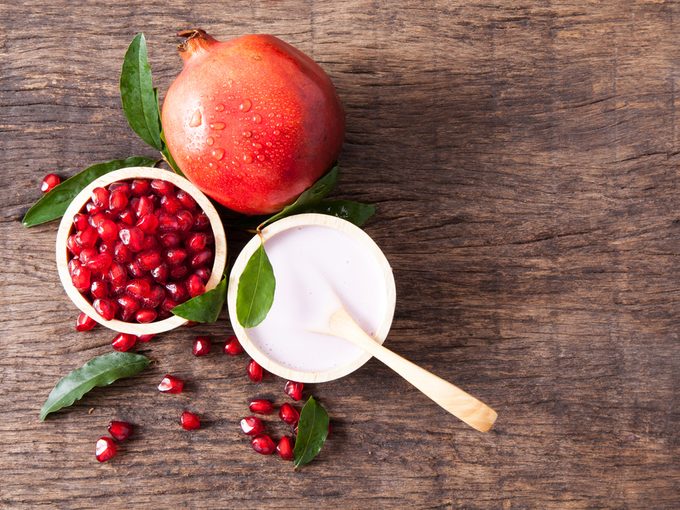The Truth About Antioxidants and Your Skin
Are antioxidant-rich skincare products as effective as they say they are? Best Health checked the science behind the claims.

Rusting iron and the browning flesh of an avocado both have something in common with the discoloration, wrinkles and fine lines of our aging skin: oxidation. Antioxidants counter this natural aging process, and that’s why they have been taking top billing in skin care.
How antioxidants work
Oxidation occurs throughout nature. In the case of our skin, it is largely caused by the creation of free radicals at the cellular level when skin is exposed to ultraviolet light. Antioxidants are touted to reduce oxidative stress by neutralizing free radicals – unstable atoms that have an unpaired electron in their outermost shell, almost like a knife without a sheath. The antioxidants act to sheathe the knife, binding with the unstable electron and stopping it from attacking collagen strands and other cells of the skin’s architecture.
Antioxidants in beauty products: pro and con
Antioxidants are compounds such as vitamins C and E, coenzyme Q10, idebenone, zinc, copper and beta carotene. Beauty companies are harnessing these, as well as the antioxidants from an increasing range of botanicals such as green tea, pomegranates, coffee berries, grape seeds, olives, mushrooms and more.
‘The use of topical antioxidants is gaining favour,’ says Dr. Patricia Farris, a leading dermatologist based in Louisiana who lectures widely on antioxidants and also consults with the cosmetic and pharmaceutical industries on their use. ‘More and more scientific studies are proving their effectiveness, not only in helping to reduce wrinkles and aging but also reducing inflammation, such as in rosacea, or even helping prevent skin cancer.’
But other dermatologists, such as Dr. Richard Thomas, a clinical assistant professor in the department of dermatology and skin science at the University of British Columbia, and Dr. Cheryl Rosen, clinical division head of dermatology at the University Health Network in Toronto, sound a note of caution.
‘Theoretically, the idea behind them is wonderful,’ says Thomas, who notes that while the juice of a lemon works to stop an avocado or apple from turning brown (thanks to vitamin C), that is a very different biological process than occurs when skin is exposed to sun. ‘There is still a great deal of hype for their use for skin,’ says Thomas. ‘They are not a magic bullet yet.’
Rosen agrees. ‘They are being used really widely and they are not harmful, but it’s not clear yet how truly helpful they are.’
Three questions about antioxidants and skin care
At issue are three different criteria: how to keep antioxidants stable in product formulas; how well antioxidants are actually absorbed into the skin; and what concentrations are necessary to make them effective while still being non-irritating. Here’s the latest on those issues:
Stability: Some skincare companies are solving the problem of rapid antioxidant breakdown, especially upon exposure to light, by packaging lotions, creams and serums in dark brown, blue or opaque bottles and in metal tubes. Other companies are including powdered vitamin C in a separate package; you mix it into the moisturizer at the time of use. A common plant compound called ferulic acid is also emerging as an effective stabilizer, based on new scientific research.
Absorption: Antioxidants that are taken by mouth either in food or supplements are circulated through the body and absorbed into cells. But when it comes to applying them to the skin, the concern has been that they would just sit on top of it, where they would soon be washed or rubbed off instead of being absorbed into the skin cells where their protective action could be most effective.
Good news, according to Farris: Many studies and reviews have appeared in medical journals confirming the ability of antioxidants to be absorbed into skin cells. ‘Now we know they can be absorbed into the cells of the stratum corneum [the topmost layer of skin] and that is where they neutralize free radicals,’ Farris says.
Concentration: How much is enough to be effective? Thomas says that question is still being determined. Some products ‘just have a sprinkle,’ he says – in other words, levels unlikely to be effective – yet concentrations that are too high run the risk of provoking skin irritation. Farris explains that there is an optimal concentration level for each antioxidant.
The bottom line
Farris, Rosen and Thomas all agree that for most women it comes down to personal choice: finding the product that seems to work best for your skin type and gives you the feel and look you seek without causing skin problems.




